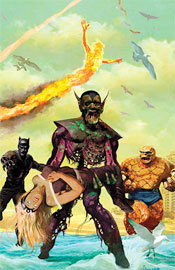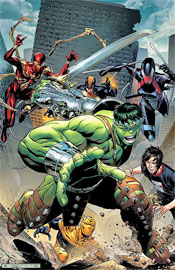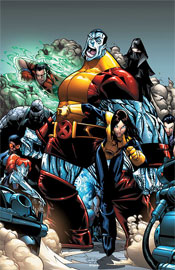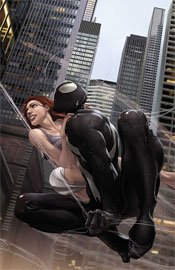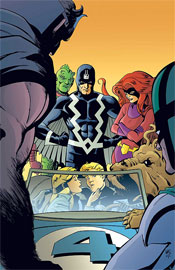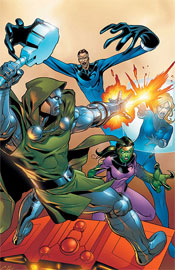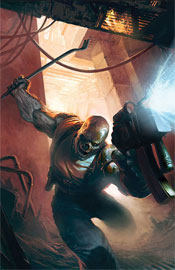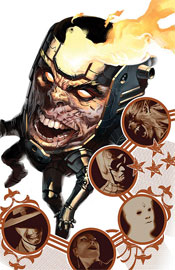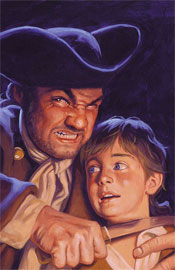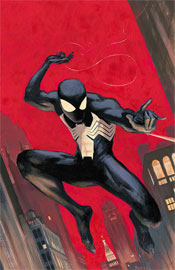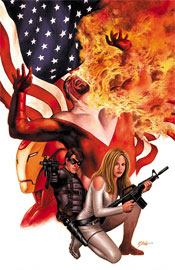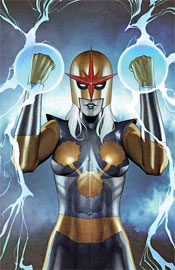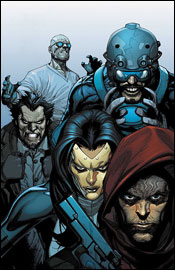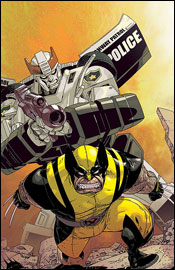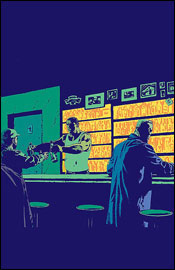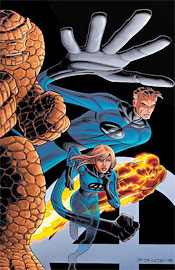
Stan Lee’s actual writing is beginning to show its age, but his creativity has never been brighter. For every exclamation-laden Reed Richards scientific monologue, there’s a narrative like “In less time than it takes to read these words, the adjudicator (an invading alien force) flashes past entire universes!” Lee has an incredible gift for simplifying his message without losing touch of his audience, and this issue is just further fuel for that fire. He’s never overly wordy, always trusting in his artist to tell their side of the story, and the reader never feels confused or out of the loop. I mean, interstellar transportation powered by the strength of sheer thought? In any other writer’s words the idea would be preposterous, but when told by Stan Lee, you accept it as reality without hesitation. He presents his ideas so simply, yet believably, that you don’t even give it a second thought.
Lee’s greatest challenge is in his dialog, which hasn’t aged well in the slightest. While his imagination still blows me away, the conversations his characters share feel like they’ve been clichéd to death. It’s more like they speak just to verbalize their internal monologues, never to actually communicate with anyone. If they see something happening, they’ll make sure to observe it through word balloon, presumably in case someone nearby hasn’t been paying attention. It happened frequently enough to disturb me from the story, and really hurts what would otherwise be a surefire classic.
This tale raises a lot of questions about superheroes in general, how their first reaction is always to attack the unknown, and how they’d be lost if that strategy were ever defeated. It’s a great concept, even if the ending is a bit of a cop-out without a definitive answer. When it’s going full-steam, this is a great read with lots of depth, but it feels like its promise was never fully realized.
I’m constantly amazed by both the quality and the quantity of John Romita Jr.’s artwork, and he holds true to form throughout this double-sized issue. How the man finds time to fire off a monthly mega-crossover in World War Hulk and still entertain himself with a random book such as this one, without any noticeable drop in quality, is one of life’s great mysteries. I’ll just gladly enjoy it for as long as he’s able to keep it up.
His work with both alien and terrestrial situations is astounding, especially the former. He brings such life and style to an interplanetary setting that it becomes thoroughly fascinating, reminding me constantly of the finest efforts of Moebius. While Romita does occasionally show some wrinkles with his style (the Watcher looks more like a giant, muscle-bound Buddha than a big-headed alien sponge of information, and his rendition of the Silver Surfer is very disappointing) for the most part his stuff is dead on, whether he’s tasked with a gigantic fight scene or a simple strategic conversation. He treats these characters with such respect, such familiarity, that it’s amazingly easy to find yourself absorbed in the experience.
If just for the sake of the two legendary creators working together, this book is worth a long look. Ultimately I was hoping for a bit more closure than I got, but when it’s good, it’s quite good. This is worth a borrow, but don’t expect too much from it.
Overall Score: 7
